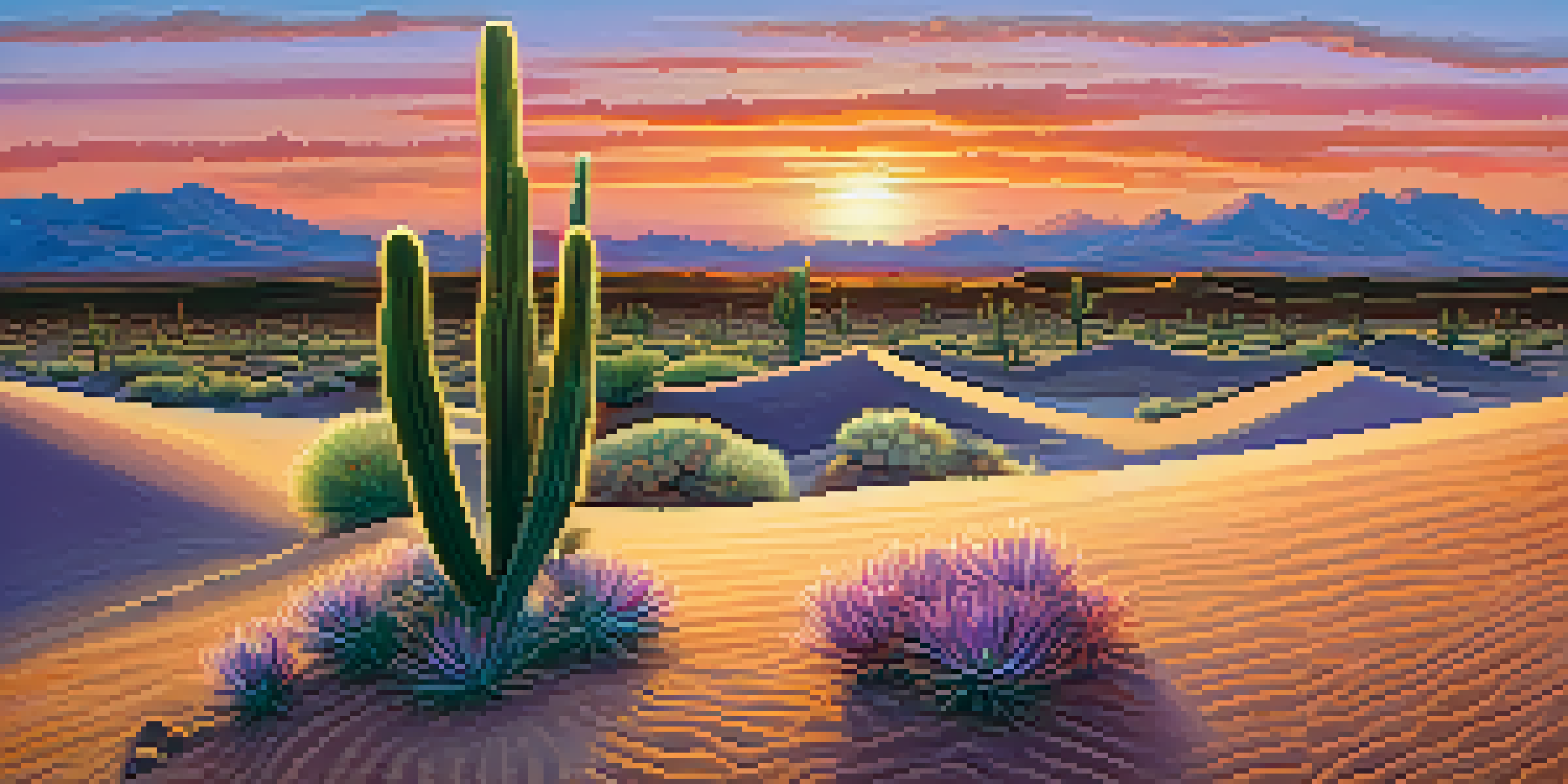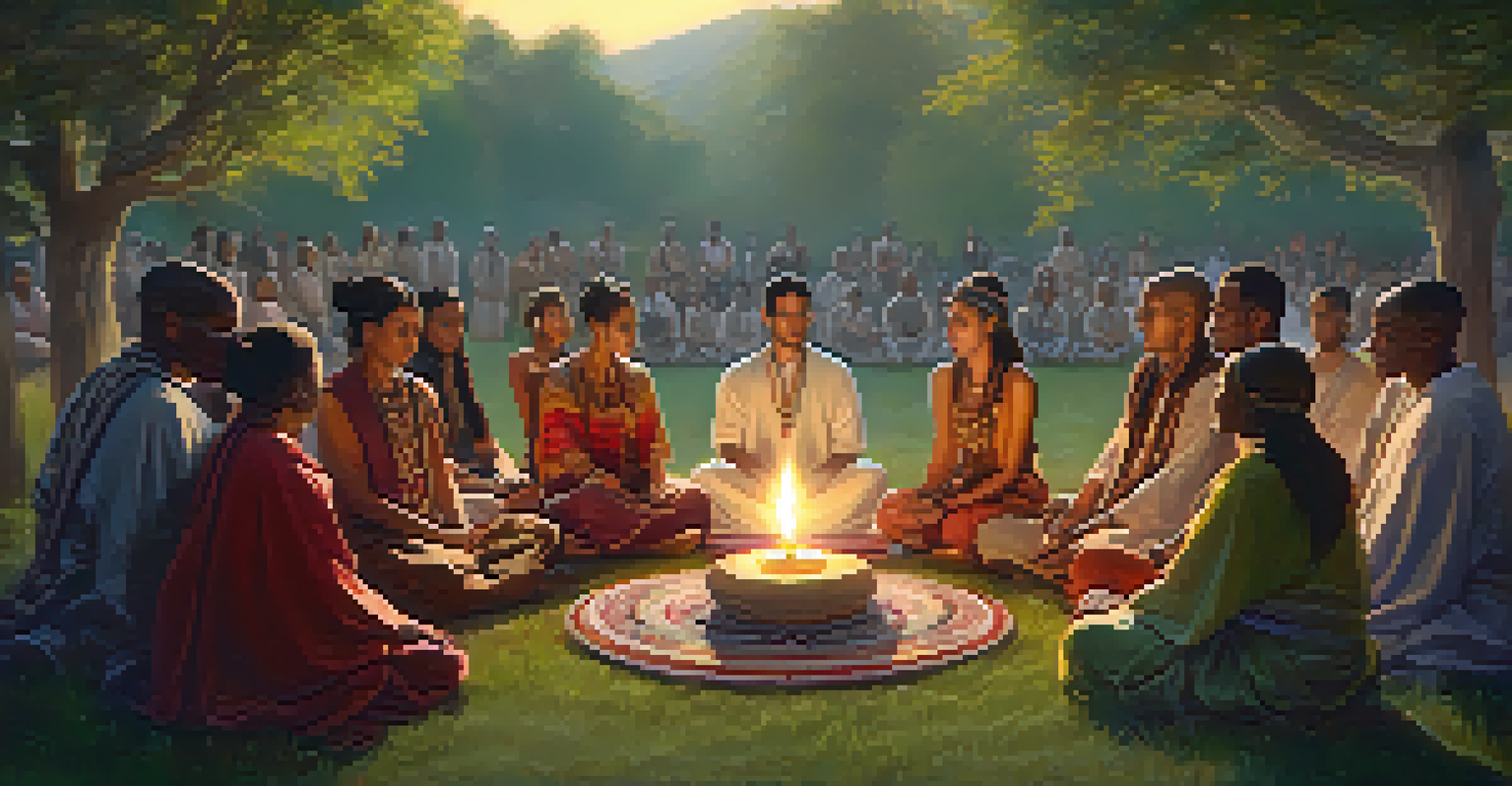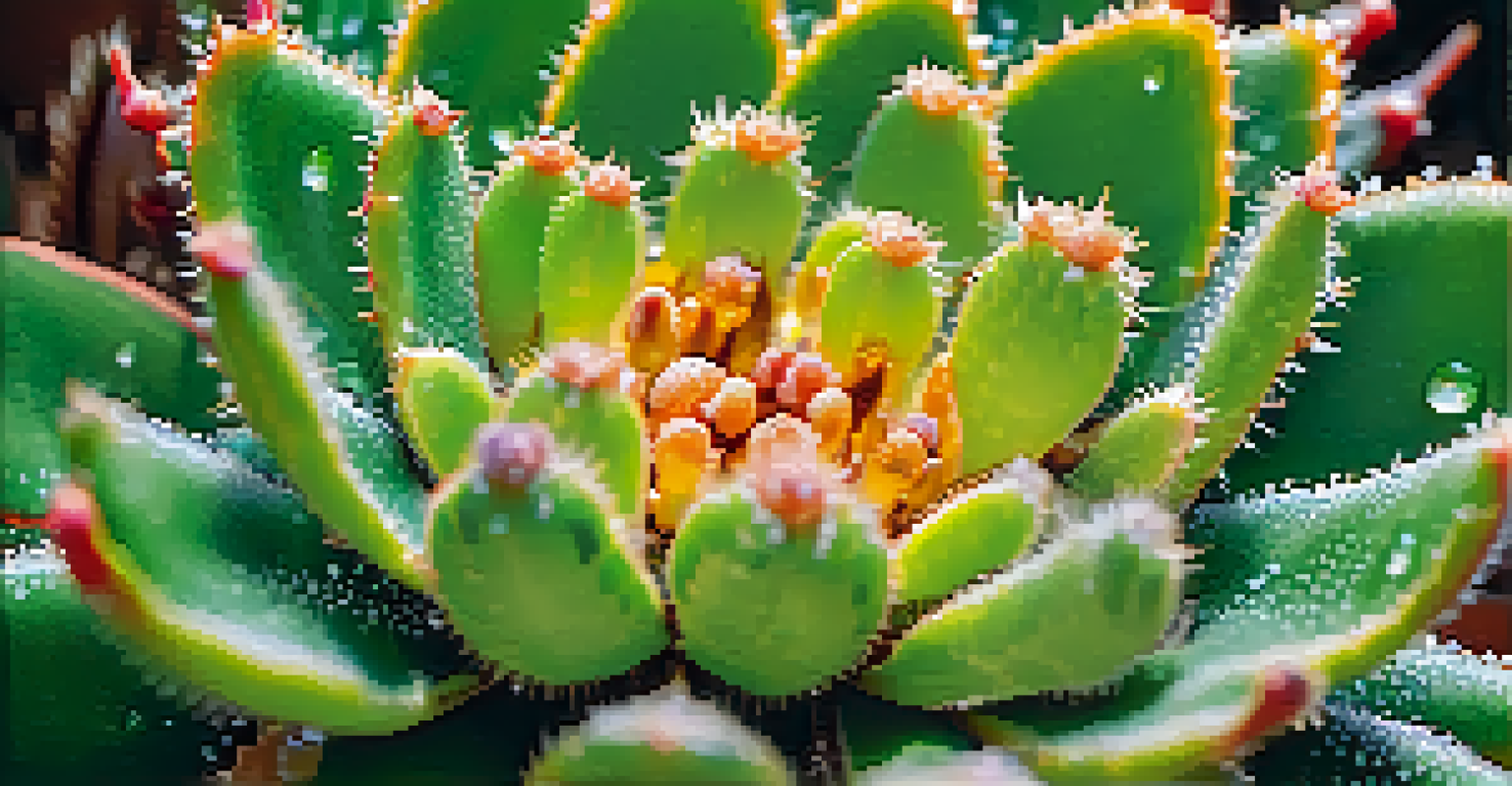Peyote, Spirituality, and the Quest for Common Ground

Understanding Peyote: A Sacred Cactus
Peyote, a small cactus native to Mexico and the southwestern United States, has long been revered in various indigenous cultures. It contains mescaline, a psychoactive alkaloid, which is often used in spiritual ceremonies. For many, consuming peyote is not merely about the substance itself, but about the profound experiences and insights it can facilitate.
The use of peyote is a sacred practice; it is not just a substance but a bridge to the spiritual world.
Throughout history, peyote has played a significant role in the spiritual practices of Native American tribes, particularly within the Native American Church. This sacred plant acts as a bridge between the physical and spiritual worlds, allowing individuals to connect with their inner selves and the universe. The rituals surrounding peyote use are deeply rooted in tradition and community, emphasizing respect for nature and the teachings it offers.
In modern times, peyote has garnered interest beyond indigenous cultures, sometimes leading to misunderstandings or misappropriations. It's essential to approach the topic of peyote with sensitivity and respect, recognizing its importance in the spiritual lives of many while also acknowledging the complexities of its use in broader society.
Spirituality and the Role of Psychedelics
Spirituality often encompasses a search for meaning, connection, and understanding of one’s place in the universe. Psychedelics, like peyote, can act as catalysts in this journey, providing experiences that challenge conventional perspectives. Many individuals report profound feelings of interconnectedness and heightened awareness during these experiences.

Scientific research has begun to explore the therapeutic potential of psychedelics, suggesting that substances like peyote can help alleviate mental health issues, enhance creativity, and foster spiritual growth. These findings resonate with traditional beliefs held by many indigenous communities, who have used peyote for centuries as a means of healing and personal development.
Peyote's Cultural Significance
Peyote serves as a vital part of Native American cultural identity, acting as a tool for healing, guidance, and community bonding.
However, the intersection of spirituality and psychedelics is not without controversy. Some argue that the commercialization of these substances undermines their sacred nature, leading to a disconnect between the experience and the cultural significance attached to it.
Cultural Significance of Peyote in Indigenous Traditions
For many Native American tribes, peyote is not just a substance but a vital part of their cultural identity. It serves as a tool for healing, guidance, and communal bonding. The rituals surrounding peyote consumption are elaborate, often involving prayers, songs, and shared stories that strengthen community ties.
To understand spirituality, one must respect the traditions that shape it, recognizing that each culture offers a unique perspective.
The ceremonies are designed to create a sacred space where individuals can seek answers, reflect on their lives, and connect with their ancestors. This deep-rooted cultural significance highlights the importance of preserving these traditions in the face of modern challenges, such as legal restrictions and cultural appropriation.
Understanding the cultural context of peyote use is crucial for anyone interested in exploring its spiritual benefits. It’s a reminder that spirituality is not a one-size-fits-all experience; it is deeply personal and varies significantly across different cultures.
The Quest for Common Ground in Spiritual Practices
In a world filled with diverse beliefs and practices, finding common ground can seem daunting. However, the use of peyote and similar substances highlights shared human experiences—seeking connection, understanding, and healing. These universal desires can unite individuals from various backgrounds, fostering dialogues about spirituality and consciousness.
As more people become interested in alternative spiritual practices, there is an opportunity to bridge gaps between different cultures. By respecting the traditions of indigenous peoples and their relationship with peyote, we can cultivate a deeper appreciation for the diverse ways spirituality is expressed.
Spirituality and Psychedelics Unite
Psychedelics like peyote can facilitate profound spiritual experiences, fostering interconnectedness and enhancing personal growth.
This quest for common ground challenges us to rethink our understanding of spirituality. It encourages openness to learning from others while honoring the unique practices that have shaped their identities.
Challenges in Peyote's Modern Usage
The growing interest in psychedelics, including peyote, has led to both positive and negative outcomes. While some seek to explore their spirituality through these substances, others may approach them without the necessary cultural context or respect. This can lead to appropriation, which disrespects the traditions of those who have used peyote for generations.
Legal restrictions further complicate the situation. In many places, the cultivation and use of peyote are tightly regulated, making it challenging for indigenous communities to access this sacred plant for ceremonial purposes. This legal landscape often leaves these communities caught in a balancing act between preservation of tradition and modernity.
Moreover, the commercialization of peyote threatens its cultural significance. As it becomes more popular among non-indigenous users, there’s a risk of diluting the spiritual practices that honor its use, which can lead to misunderstandings about its true purpose and meaning.
Moving Towards Respect and Understanding
To foster respect and understanding in discussions surrounding peyote, it’s essential to educate ourselves about its cultural significance. Engaging with indigenous voices and perspectives can help illuminate the complexities of peyote use and its spiritual implications. This awareness is a step toward bridging the divide between different spiritual practices.
Additionally, creating spaces for dialogue allows for a broader exploration of spirituality, where individuals can share experiences and insights without feeling judged or marginalized. Such conversations can lead to a deeper understanding of the various paths people take in their quest for meaning.
Challenges of Modern Peyote Use
The increasing interest in peyote poses risks of cultural appropriation and threatens the sacred traditions surrounding its use.
Ultimately, the goal should be to promote a sense of unity that honors diversity. By valuing the unique contributions of different cultures, we can build a more inclusive understanding of spirituality that transcends boundaries.
The Future of Peyote and Spiritual Exploration
As the conversation around psychedelics and spirituality continues to evolve, it’s crucial to think about the future of peyote and its role in spiritual exploration. With growing interest in mental health and wellness, there is potential for renewed respect and understanding of traditional practices. This could lead to a renaissance of interest in indigenous teachings and philosophies.
However, this future must be approached with care. It calls for a commitment to ethical practices that respect indigenous cultures and their rights to their sacred traditions. Collaborations that honor these communities can pave the way for a more respectful integration of peyote into broader spiritual discussions.

In conclusion, the journey of exploring peyote and spirituality invites us to reflect on our connections with each other and the world around us. By seeking common ground, we can create a more enriched spiritual landscape that acknowledges and celebrates our shared humanity.